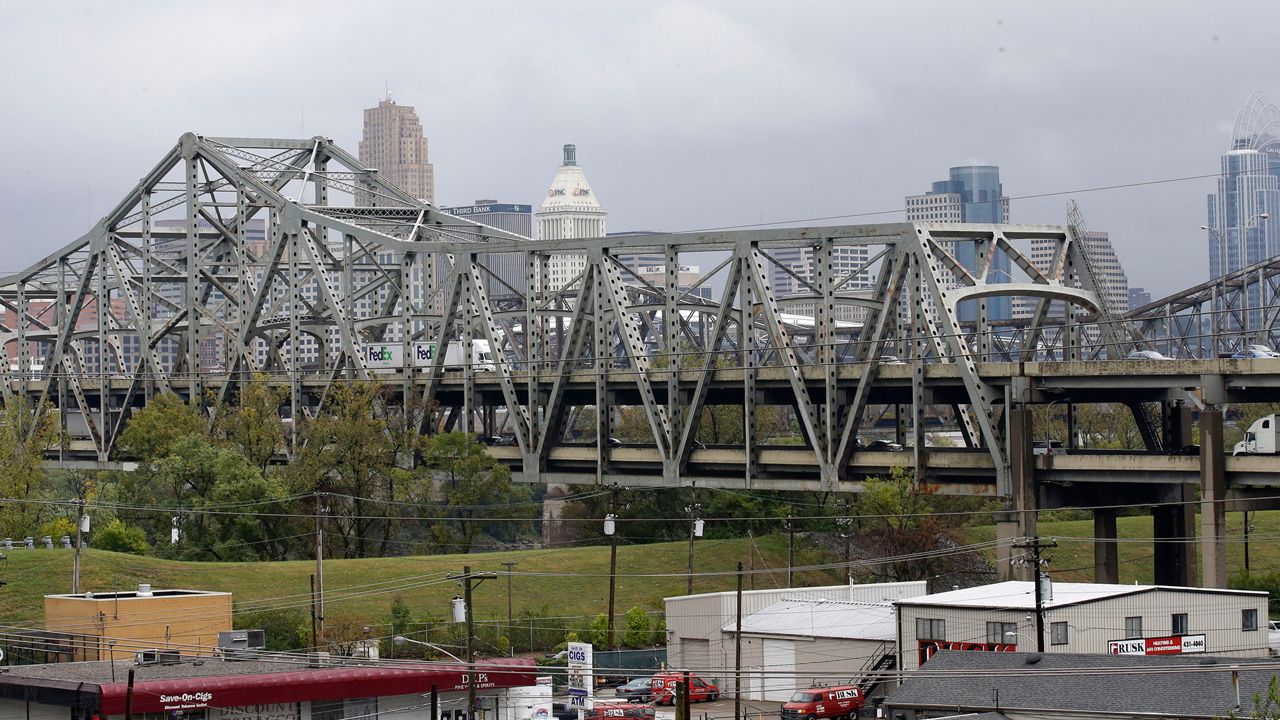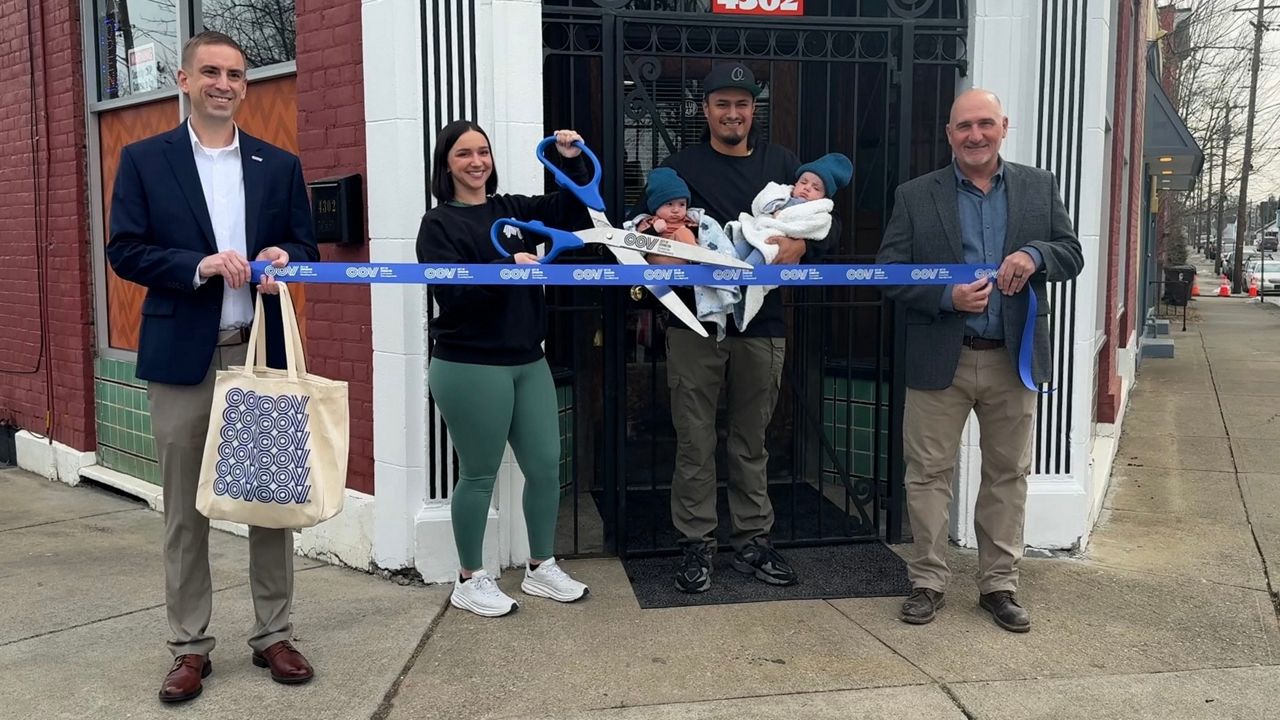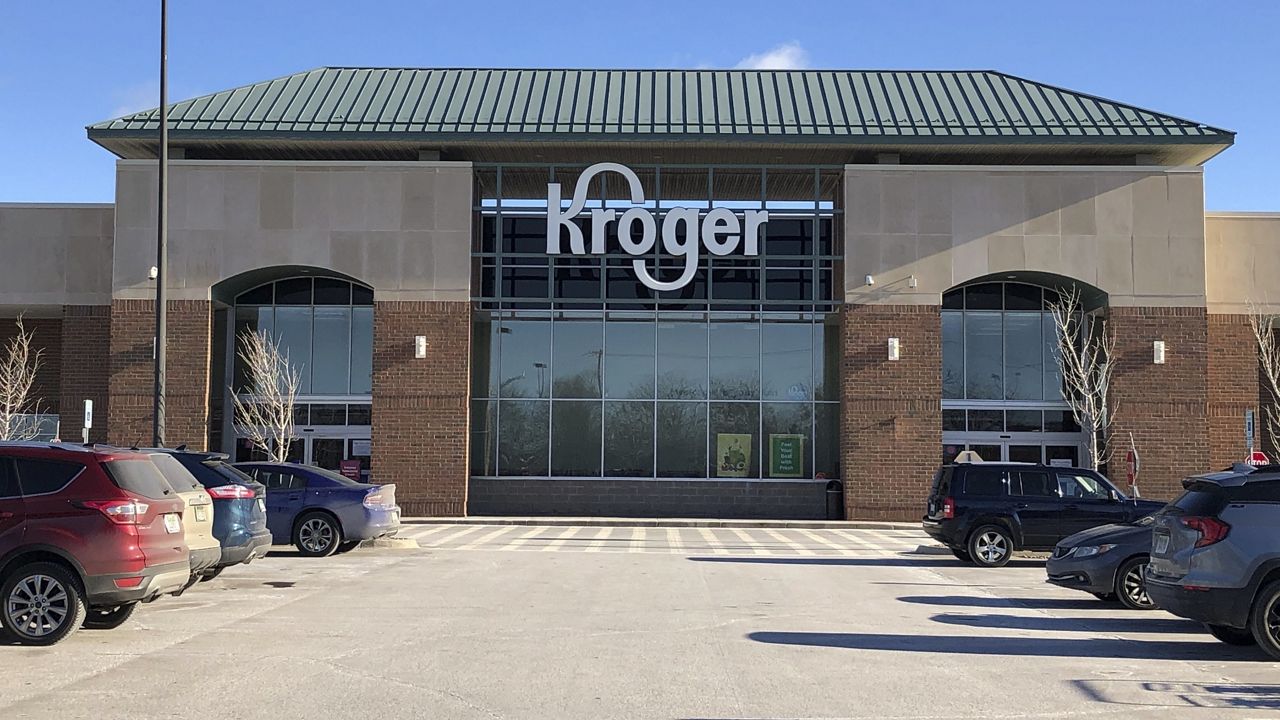FRANFORT, Ky. — New plans for the Brent Spence Bridge Corridor Project will reduce the footprint of the project and cause fewer property impacts in the area, Kentucky Gov. Andy Beshear and Ohio Gov. Mike DeWine announced Friday.
“While this is a nationally significant project, it is still very much a community-minded project,” Beshear said. “Our teams have gone to great lengths to shrink property impacts while still delivering a solid solution to the traffic congestion issues in the region.”
“It has been important from the beginning to make sure we’re meeting the needs of today and tomorrow while also being mindful about the impacts this project has on surrounding properties,” said DeWine.
The bi-state project adds a new companion bridge alongside the existing Brent Spence Bridge and gives needed improvements to the Brent Spence Bridge. The goal is to address longstanding capacity and mobility issues that have plagued traffic using Interstate 71 and Interstate 75 to cross the Ohio River between Ohio and Kentucky.
The Federal Highway Administration originally approved the project in 2012. Initial plans for the bridge included two 14-foot shoulders on each deck of the new bridge and expanded shoulder widths on the existing bridge, and were projected to cover nearly 25 acres and span nearly 150 feet in width. The revised plans revealed on Friday shrink that to almost half the size of the 2012 plans - covering approximately 14 acres and 84 feet in width. They still include expanded emergency shoulders on the existing Brent Spence Bridge and 12-foot shoulders on the new companion bridge.
The new plans also separate interstate and local traffic to improve traffic flow, with interstate traffic routed to the new companion bridge and local traffic using the Brent Spence Bridge.
The passage of the Bipartisan Infrastructure Law earlier this year provided a funding opportunity to forge ahead with the project, according to officials. The Ohio Department of Transportation and the Kentucky Transportation Cabinet began a thorough review of the plans for the second bridge, resulting in the revised plans.
“We felt good about where we were a decade ago because that solution provided additional capacity that reduces congestion and improves travel throughout the corridor,” said Ohio Department of Transportation Director Jack Marchbanks. “We feel even better about this revision because it dramatically reduces the footprint of the new bridge and completely separates interstate and local traffic.”
While the bridges are a major focus of the project, they only account for about one-third of the entire corridor project. The bi-sate project aims to work comprehensively on the entire eight-mile corridor between the Western Hills Viaduct in Ohio and Dixie Highway in Kentucky.
The project has drawn support from both sides of the aisle, including both of Ohio’s U.S. Senators - Sen. Rob Portman (Republican) and Sen. Sherrod Brown (Democrat) - as well as Kentucky’s two Republican U.S. Senators - Sens. Mitch McConnell and Rand Paul.
Kentucky Transportation Secretary Jim Gray heralded the project as a big step forward for the region. “The Brent Spence plays a critical role in the solution being put forward and we are excited that our partners in Covington and other local municipalities in Kentucky have voiced their support for our current plan,” he said.









